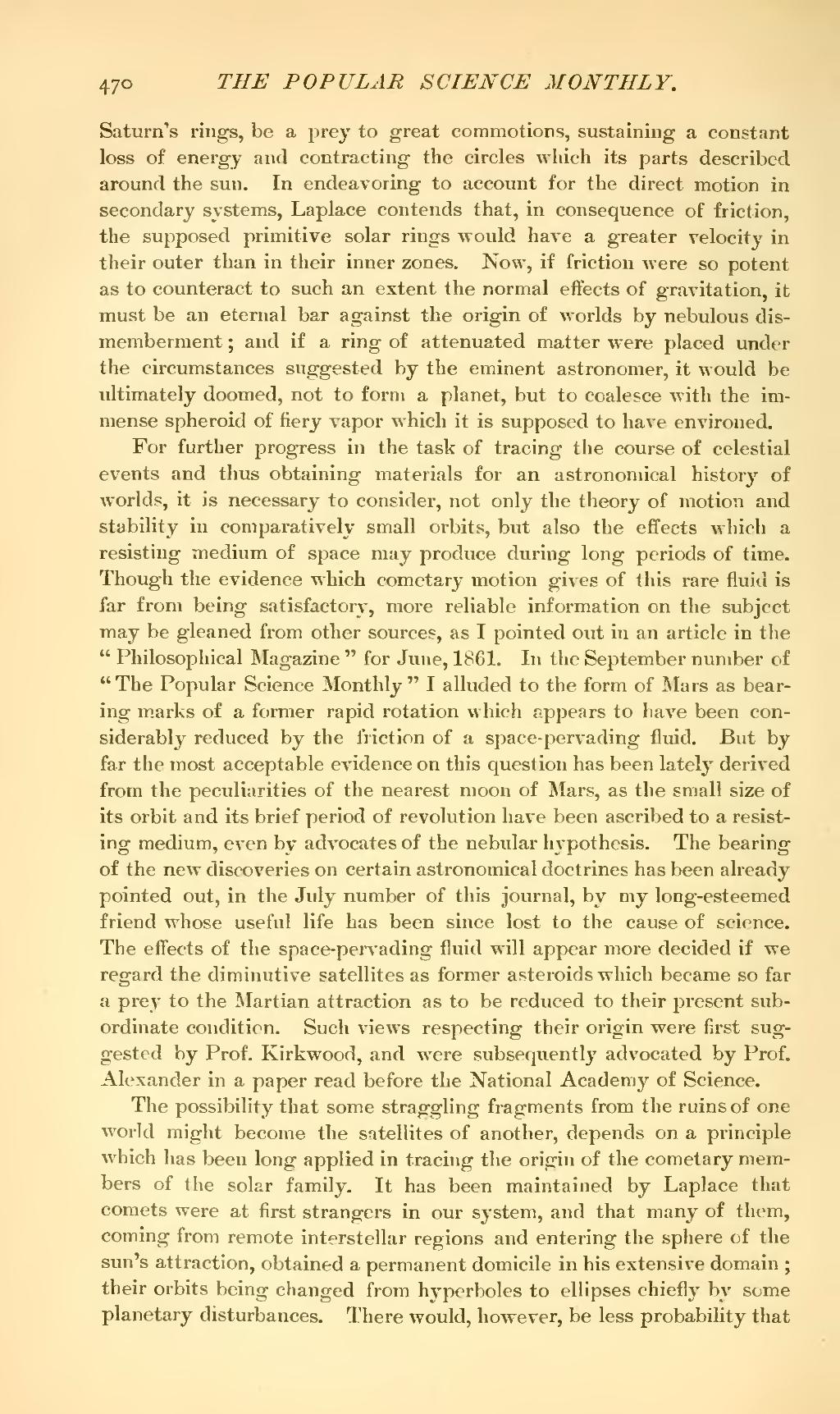Saturn's rings, be a prey to great commotions, sustaining a constant loss of energy and contracting the circles which its parts described around the sun. In endeavoring to account for the direct motion in secondary systems, Laplace contends that, in consequence of friction, the supposed primitive solar rings would have a greater velocity in their outer than in their inner zones. Now, if friction were so potent as to counteract to such an extent the normal effects of gravitation, it must be an eternal bar against the origin of worlds by nebulous dismemberment; and if a ring of attenuated matter were placed under the circumstances suggested by the eminent astronomer, it would be ultimately doomed, not to form a planet, but to coalesce with the immense spheroid of fiery vapor which it is supposed to have environed.
For further progress in the task of tracing the course of celestial events and thus obtaining materials for an astronomical history of worlds, it is necessary to consider, not only the theory of motion and stability in comparatively small orbits, but also the effects which a resisting medium of space may produce during long periods of time. Though the evidence which cometary motion gives of this rare fluid is far from being satisfactory, more reliable information on the subject may be gleaned from other sources, as I pointed out in an article in the "Philosophical Magazine" for June, 1861. In the September number of "The Popular Science Monthly" I alluded to the form of Mars as bearing marks of a former rapid rotation which appears to have been considerably reduced by the friction of a space-pervading fluid. But by far the most acceptable evidence on this question has been lately derived from the peculiarities of the nearest moon of Mars, as the small size of its orbit and its brief period of revolution have been ascribed to a resisting medium, even by advocates of the nebular hypothesis. The bearing of the new discoveries on certain astronomical doctrines has been already pointed out, in the July number of this journal, by my long-esteemed friend whose useful life has been since lost to the cause of science. The effects of the space-pervading fluid will appear more decided if we regard the diminutive satellites as former asteroids which became so far a prey to the Martian attraction as to be reduced to their present subordinate condition. Such views respecting their origin were first suggested by Prof. Kirkwood, and were subsequently advocated by Prof. Alexander in a paper read before the National Academy of Science.
The possibility that some straggling fragments from the ruins of one world might become the satellites of another, depends on a principle which has been long applied in tracing the origin of the cometary members of the solar family. It has been maintained by Laplace that comets were at first strangers in our system, and that many of them, coming from remote interstellar regions and entering the sphere of the sun's attraction, obtained a permanent domicile in his extensive domain; their orbits being changed from hyperboles to ellipses chiefly by some planetary disturbances. There would, however, be less probability that

